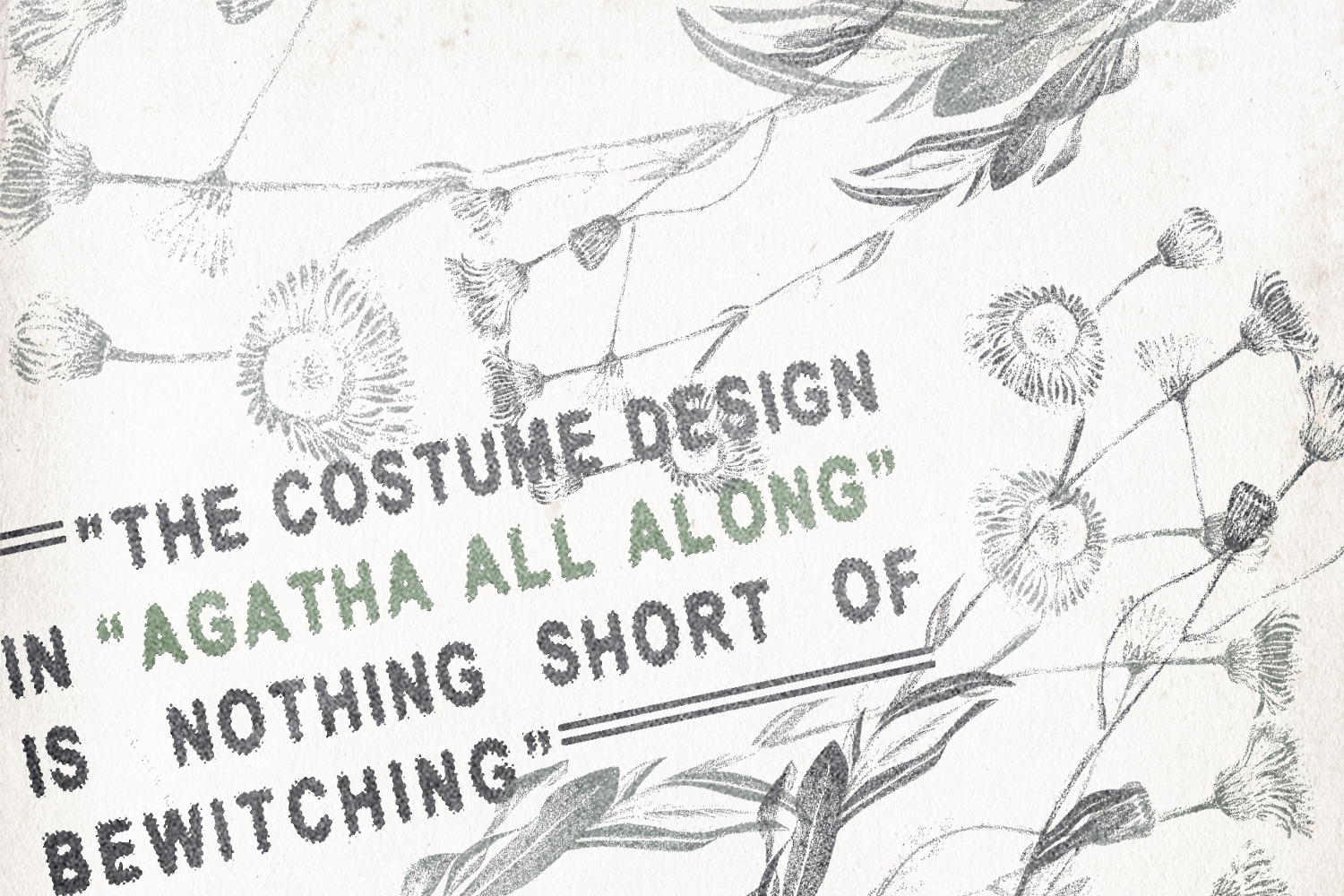The idea of “show, don’t tell” is more than just a concept drilled into our heads during high school English classes. It is a core tenet of storytelling that the Marvel television show “Agatha All Along” makes look easy.
As a spin-off of Marvel’s “Wandavision,” “Agatha All Along” follows Agatha Harkness (Kathryn Hahn) and her improvised coven of witches as they face the trials and tribulations of the famed Witches Road. Known for its formulaic story structure, the Marvel Cinematic Universe has been mocked for long stretches of dialogue that serve no purpose, other than providing exposition. However in “Agatha All Along,” showrunner Jac Schaeffer and costume designer Daniel Selon take a different approach, using costumes to wordlessly direct the story.
At the climax of the show’s first episode, Agatha breaks free from the spell she was put under at the end of “Wandavision,” physically pulling herself back through the decades and their distinct fashions. She starts in a Juicy velour-reminiscent tracksuit and emerges last from her 50s, black and white look, the one she first appeared in during “Wandavision.”
After peeling back all of the layers, Agatha finally finds herself in the present–stark naked. She is powerless, literally stripped bare and devoid of the magic that made her the great witch she once was. It’s through secrecy, manipulation, and betrayal, which much of the show revolves around, that Agatha regains her power.
These themes are also what make the costumes of later episodes, like episode seven, that much more interesting. Episode seven revolves around a trial we quickly learn is designed for Agatha, taking place at an intensely 80s sleepover. The costumes are jarring, each having a unique feeling of intimacy that the audience has yet to experience with the characters. Dressed in nightgowns, matching silk sleep sets, and fluffy shorts, the characters now have armor to hide behind.
It’s in this same episode that the show’s twists are teased to the audience–if they look for them. For example, the young witch, Teen (Joe Locke), sports a blue headband, red and white baseball tee, and a fanny pack. This outfit draws on elements from the uniform of the superhero Wiccan, also known as Billy Maximoff, whom Teen is revealed to be at the end of the episode. The blue headband foreshadows his crown, the red sleeves of his baseball tee hint at his cape, and the fanny pack symbolizes his chunky belt.
By the end of the series, only three members of the coven remain. The final trial takes them back to where they began their journey in Agatha’s basement–now an industrial, purple room, modeled after a morgue. The costumes are just as simple as the room, with each remaining character in a beige hospital gown and nothing else. There is no more glitz or glamour left–they only have themselves.
Throughout the show, Agatha puts on a facade, hiding her pain and grief behind a wicked persona. But it is at the end of this episode that we see her honestly sit with herself for the first time. The basic costuming mirroring the industrial set only further pushes the feelings of truth and solitude that are palpable in Hahn’s performance.
The theatrics and intricate symbolism of the costume design in “Agatha All Along” are key in propelling the show’s incredible storytelling. However, it is the show’s ability to balance more heavily costumed sequences with simpler styling that makes its narrative so successful.
Words by Ellie Levine
Graphic by Eve Friday

